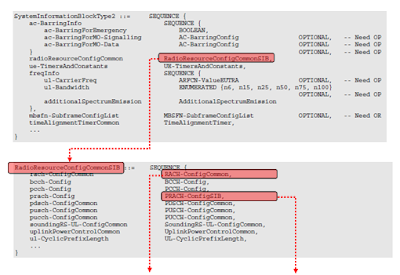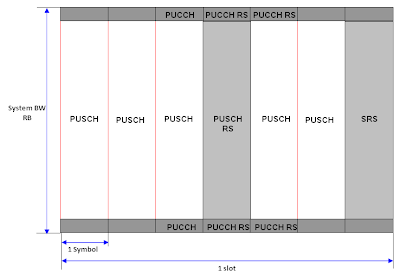If you have something about which you have no idea of what they are talking about, you would ask somebody else for explanation.. and usually what you think is expert would give you very brief explanation which would not help you much and say "Refer to the 3GPP spec AA.BBB for the detailed explanation". So you download and open the specification AA.BBB and start reading. Does this help ? In most case, NO. If you read the spec AA.BBB and it also says in similar way as your expert did, meaning "giving you a minimum description and saying 'refer to spec BB.CCC" and if you gets into the spec BB.CCC.. you will get into the same situation. This would be the first frustration when you try to understand based on the 3GPP specification.
Is there any easy solution for this ? Honestly and unfortunately, NO. But one thing that may help you in long term would be to understand relationships among multiple specifications.
Pick a specific area where you are specially interested in and make a list of additional specification and define the relationship among those specification. I have a couple of examples here.
Tips for myself.
Currently I am pretty heavily involved in writing test cases for Physical Layer and Higher Layer Signaling (RRC/NAS) and the following is 3GPP standards that I frequently refer to. This may or may not help you much.. but I keep this for my own quick reference.- Overall RRC Protocol - TS36.331
- NAS : EPS - TS 24.301, TS 29.274
- NAS : QoS Related - TS 23.203 (Policy and Charging Control Architecture)
- DCI Format - 36.213 7.1 UE procedure for receiving the physical downlink shared channel
- Transport Block Size and Throughput Calculation - TS36.213 Table7.1.7.1-1
PUCCH Reference Signal
- TS 36.211 - 5.4 Physical uplink control channel
- TS 36.211 - 5.4.1 PUCCH formats 1, 1a and 1b
- TS 36.211 - 5.4.3 Mapping to physical resources
- TS 36.211 - 5.5.1.3 Group hopping
- TS 36.211 - 5.5.2.2 Demodulation reference signal for PUCCH
- TS 36.211 - 5.5.2.2.1 Reference signal sequence
- TS 36.212 - 5.2 Uplink transport channels and control information
- TS 36.212 - 5.2.3 Uplink control information on PUCCH
- TS 36.213 - 10.1 UE procedure for determining physical uplink control channel assignment
- TS 36.331 - 6.3.2 Radio resource control information elements - PUCCH-Config
PUSCH
- TS 36.211 - 5.5.2.1 Demodulation reference signal for PUSCH
- TS 36.212 - 5.2 Uplink transport channels and control information
- TS 36.212 - 5.2.2 Uplink shared channel
- TS 36.212 - 5.2.3 Uplink control information on PUCCH
- TS 36.331 - 6.3.1 System information blocks – SystemInformationBlockType2
- TS 36.331 - 6.3.2 Radio resource control information elements – PUSCH-Config
PHICH
- TS 36.211 - 6.9 Physical hybrid ARQ indicator channel
- TS 36.213 - 8.3 UE ACK/NACK procedure
- TS 36.213 - 9.1.2 PHICH Assignment Procedure
- TS36.211 - 5.7 Physical random access channel
- TS36.211 - Table 5.7.1-2 Frame structure type 1 random access configuration for preamble format 0-3.
- TS36.331 - 6.3.1 System information blocks – SystemInformationBlockType2
- TS36.331 - 6.3.2 Radio resource control information elements - PRACH-Config
- TS36.331 - 6.3.2 Radio resource control information elements - RACH-ConfigCommon
- TS36.331 - 6.3.2 Radio resource control information elements - RACH-ConfigDedicated
- TS 36.304 - 7 Paging
- TS 36.213 - 9.1.1 PDCCH Assignment Procedure
Specifications for UE conformance Testing
If you want to know the details of Conformance Test for LTE, you need to refer to the specification listed at http://www.3gpp.org/ftp/Specs/html-info/36-series.htm
Even though you are not in the conformance type of testing, a lot of IOT (Inter Operability Test) and any user defined test cases has similar concept to the conformance. So trying to understand the conformance testing would help you understand any type of testing.
The first set of specification you have to be familar with are as follows :
- 36.508 : UE Test Environment
- 36.101 : UE TxRx
For example, if you want to understand the procedure about "LTE Transmit Power" Measurement, the first thing you will look into will be the following description of 36.521.
** 6.2.2.4.1 Initial Condition **1. Connect the SS to the UE antenna connectors as shown in TS 36.508[7] Annex A Figure A3.
2. The parameter settings for the cell are set up according to TS 36.508 [7] subclause 4.4.3.
3. Downlink signals are initially set up according to Annex C.0, C.1, and C.3.0, and uplink signals according to Annex H.1 and H.3.0.
4. The UL Reference Measurement channels isset according to Table 6.2.2.4.1-1.
5. Propagation conditions are set according to Annex B.0.6. Ensure the UE is in State 3A according to TS 36.508 [7] clause 4.5.3A. Message contents are defined in clause6.2.2.4.3.
** 6.2.2.4.2 Test procedure **
1. SS sends uplink scheduling information every TTI via PDCCH DCI format 0 for C_RNTI to schedule the ULRMC according to Table 6.2.2.1.4.1-1. Since the UE has no payload and no loopback data to send the UE sendsuplink MAC padding bits on the UL RMC
2. Send continuously uplink power control “up” commands in the uplink scheduling information to the UE until theUE transmits at its maximum output power state according to the test configuration from Table 6.2.2.4.1-1.
3. Measure the mean power of the UE in the channel bandwidth of the radio access mode. The period ofmeasurement shall be one sub-frame (1ms).
Just for overall test procedure, the information described above would be enough even without refering to other specification or table. But if you have to do the troubleshooting of the failed test/test error or if you are an engineer who has to develop the test cases, you should not miss even a tiny particles out of all of the following items which was refered in the procedure.
- TS 36.508 Annex A Figure A3
- TS 36.508 subclause 4.4.3.
- TS 36.521 Annex C.0, C.1, and C.3.0
- TS 36.521 Annex H.1 and H.3.0
- TS 36.521 Table 6.2.2.4.1-1
- TS 36.508 clause 4.5.3A
- TS 36.521 Table 6.2.2.1.4.1-1
If you want to know the protocol sequence during the test case execution, you have to refer to TS 36.508 section "4.5 Generic Procedure"
Then you need to know the contents (IE : Information Elements) of each message which is described in 36.508 section 4.6, 4.7, 4.7A.
Isn't this complicated enough to make your head spinning ? -:) But once you got into this area, you would never survive without being familiar with this documents and struggling with them.

















